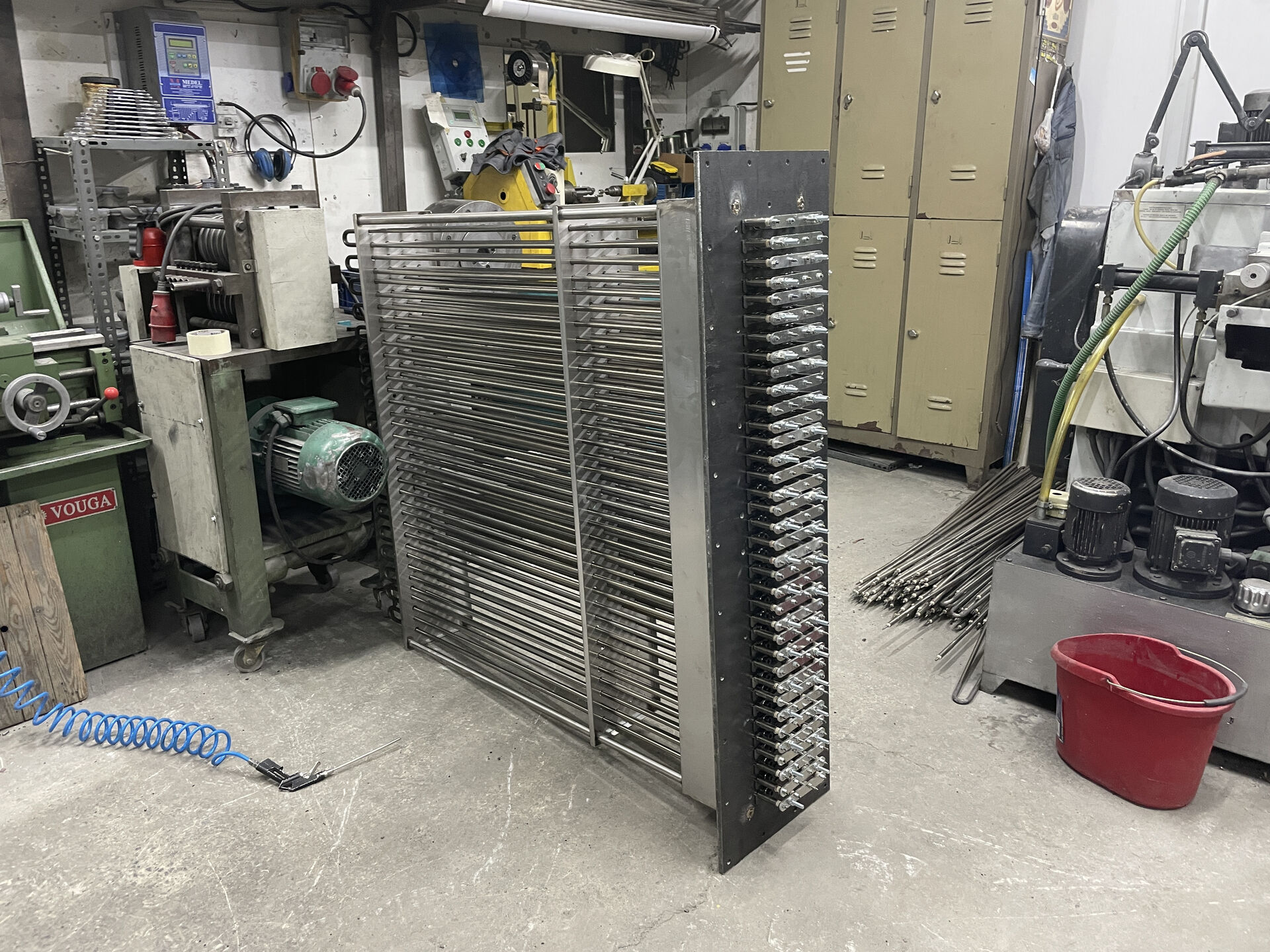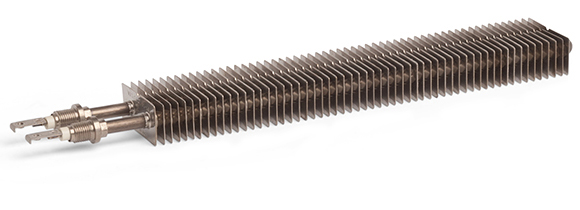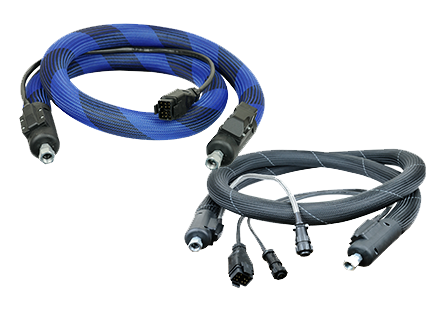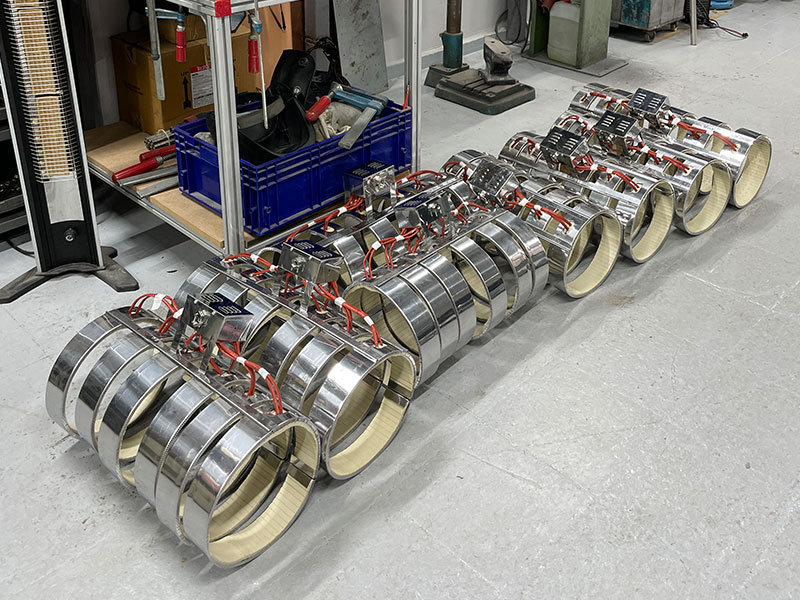
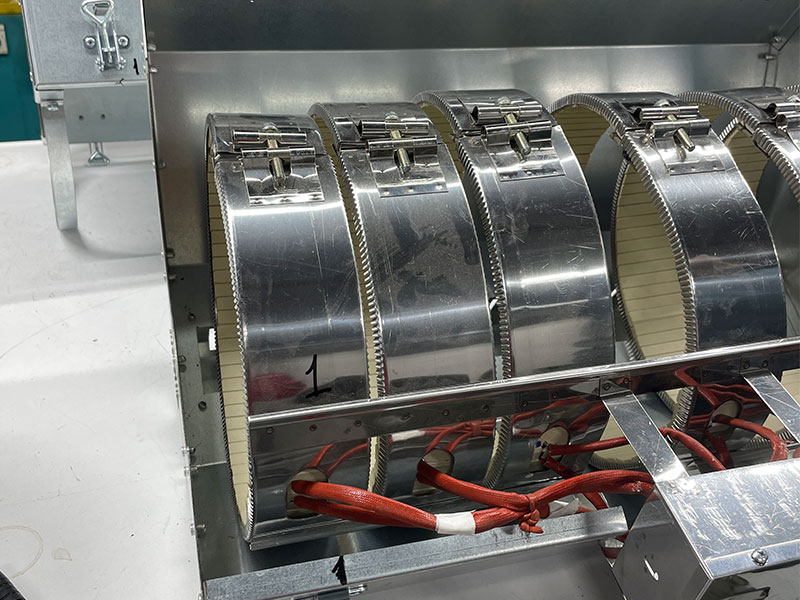
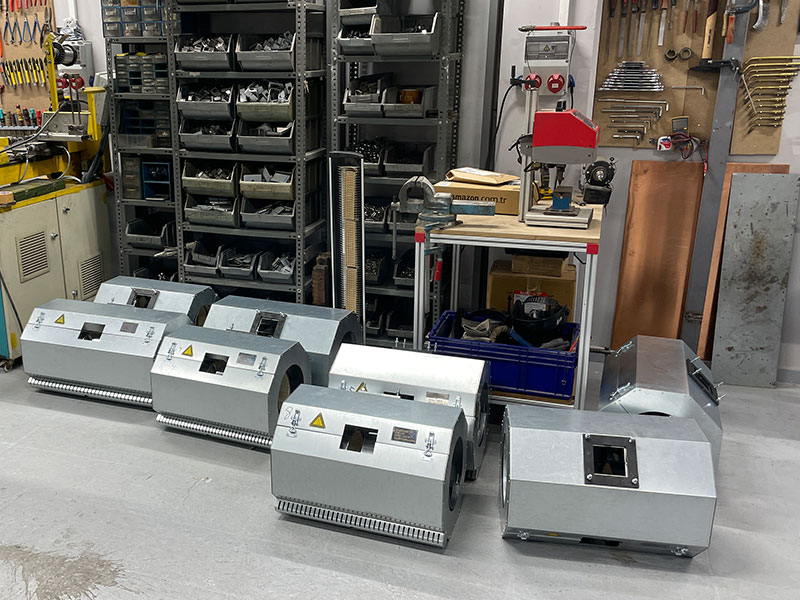
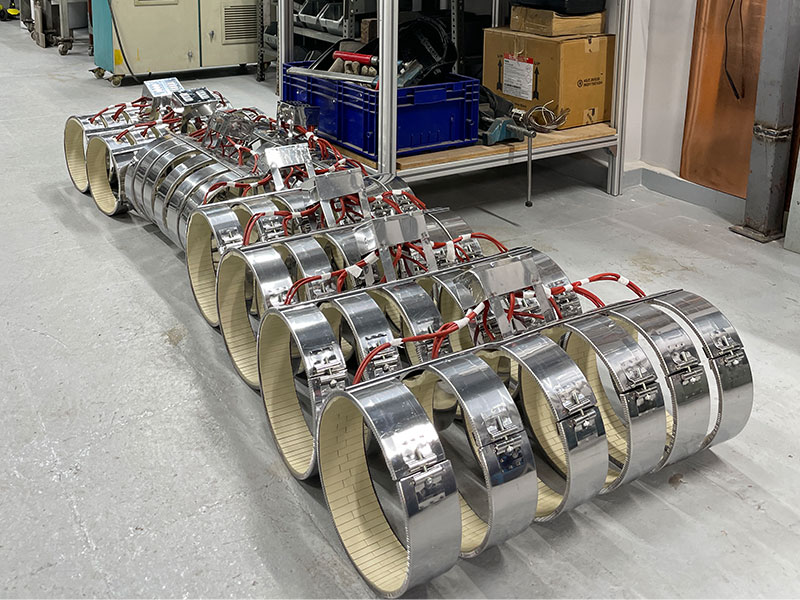
Seramik rezistanslar, elektriği ısıya çeviren cihazlardır. Seramik rezistanslar, metal bir telin seramik bir malzeme ile kaplanmasıyla yapılır.
Seramik malzeme, ısıyı eşit bir şekilde dağıtır ve yalıtım sağlar. Seramik rezistanslar, yüksek sıcaklıklara dayanabilir ve uzun süre kullanılabilir.
Seramik rezistanslar, farklı şekil, boyut ve güçte olabilir. Seramik rezistansların en yaygın kullanılan üç tipi vardır:
- Seramik bant rezistanslar: Bu tip rezistanslar, seramik blokların metal bir bant ile birleştirilmesiyle yapılır. Silindirik yüzeylere takılır. Fırın, ısıtma tankı, ekstrüzyon makinesi gibi yerlerde kullanılır.
- Seramik kartuş rezistanslar: Bu tip rezistanslar, seramik bir tüpün içine metal bir tel yerleştirilmesiyle yapılır. Delikli yüzeylere sokulur. Kalıp, plastik enjeksiyon, sıcak damga gibi yerlerde kullanılır.
- Seramik plaka rezistanslar: Bu tip rezistanslar, seramik bir plakanın üzerine metal bir tel sarılmasıyla yapılır. Düz yüzeylere yapıştırılır. Laboratuvar, kızartma, ısıtma tablası gibi yerlerde kullanılır.
Seramik rezistanslar, elektrikli ısıtma sistemlerinde çok tercih edilir. Seramik rezistansların avantajları şunlardır:
- Yüksek verimlilik: Seramik rezistanslar, elektriğin büyük bir kısmını ısıya çevirir. Bu da enerji tasarrufu sağlar.
- Hızlı ısınma: Seramik rezistanslar, kısa sürede yüksek sıcaklıklara ulaşabilir. Bu da ısıtma süresini kısaltır ve iş verimliliğini artırır.
- Düşük ısı kaybı: Seramik rezistanslar, ısıyı eşit bir şekilde dağıtır ve yalıtım sağlar. Bu da ısı kaybını azaltır ve ısıtma kalitesini artırır.
- Uzun ömür: Seramik rezistanslar, yüksek sıcaklıklara, darbelere ve korozyona dayanıklıdır. Bu da ömürlerini uzatır ve bakım maliyetlerini düşürür.
Ceramic insulated resistors are important components that play an important role in electronic circuits but are often overlooked. We will examine in detail what ceramic insulated resistors are, how they work, and why they are so important in the world of electronic design. We will also discuss the advantages of these valuable components and how to choose them.
What are Ceramic Insulated Resistances?
Ceramic insulated resistors are made of resistance elements coated with a ceramic layer. They are formed. Ceramic provides excellent electrical insulation and can also withstand high temperatures. Therefore, ceramic insulated resistors offer a reliable and durable option when used to provide electrical resistance.
Working Principle of Ceramic Insulated Resistant
Ceramic insulated resistors provide electrical resistance. It is used to adjust the electrical resistance of the resistor element through which the current passes. The ceramic layer protects this element from environmental factors (moisture, dust, chemicals, etc.) and provides electrical insulation. As the electric current passes through the ceramic insulated resistor, the resistance changes and the desired electrical measurement is obtained.
Advantages of Ceramic Insulated Resistances
Ceramic insulated resistors have a number of advantages:
- High Sensitivity
- Durability
- High Temperature Resistance
- Low Temperature Coefficient
Ceramic Insulated Resistance Selection
There are some factors you should consider when choosing a ceramic insulated resistor:
- Nominal Resistance Value
- Tolerance
- Power Rating
- Operating Temperature Range
Ceramic insulated resistors are important as a fundamental component of electronic circuits and They should be considered unsung heroes in the design world. Choosing the right ceramic insulated resistor can improve the performance of your device and enable you to obtain precise measurements. If you want to improve your electronic design or make reliable measurements, you can benefit from the advantages of ceramic insulated resistors.

